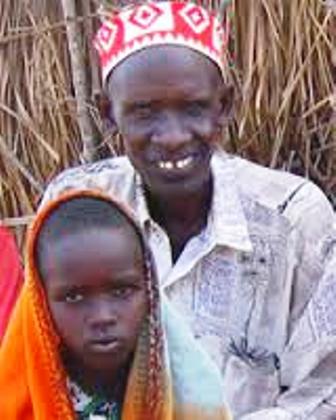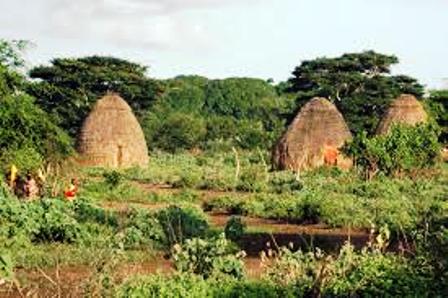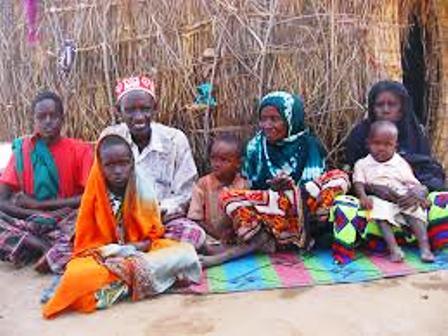Orma People and their Culture in Kenya
Who are the Orma People in Kenya?The Orma are semi-nomadic people, some well known from their tall, slender physiques and handsome features, who live in the southeastern parts of Kenya in Tana River and Lamu districts.
They keep cattle and move to the higher grounds during the rainy season when the Tana River floods. They move with their herds inland.
The tribe has a population of about 70,000 people .They are related to the Borana and other Oromo groups.
The Orma language is an Eastern Cushitic language of the Oromo family. Orma is similar to Borana-Arsi-Guji (also called Borana), but not mutually intelligible.
Many who are nearer to the coast speak Swahili.
Cattle are central to the Orma culture although they keep goats and sheep alongside their cattle. Cattle are paid as bride price from the groom's family.
They are also slaughtered at weddings and funerals. Meat is the main food, supplemented with milk and blood, though now some Orma also eat maize, rice, beans and tea.
Special ceremonies surround the birth of children which starts with dedication of the child up to seven years of age. A woman is secluded for a total of 40 days where she feasts with the other women in the village and the baby is dedicated again. \
The ceremonies end with dancing. The expectations and demands of the encroaching technological modern life have led to cultural challenges. About 99% of the orma are muslims where they practice all the rites and festival of Islam.
The Orma are remnants of the once powerful "Galla nation" of Ethiopia and northern Kenya. In the late nineteenth century, wars with neighboring tribes forced the Orma to migrate south. Some moved to the rich delta area of the lower Tana River and others settled west of the river.
The Orma also go by the name "Galla," which is widely used in Ethiopia. They do not call themselves this, however, since it is considered to be derogatory.
Raising cattle is their basic means of survival. Their distinct breed of the white, long-horned zebu cattle are among the finest in Africa. The cows are commonly known as Borana cows (with a hump). Zebu are used as a "bride price" and are slaughtered at weddings and funerals.
Where are they located?
Some key Orma cities are Hola (the capital of Tana River District), Garsen, Tarasaa and Witu.
What are their lives like?
Though the Orma basically survive by raising cattle, they also raise goats and sheep. Men who own more than 1,000 head of cattle are granted special recognition in their communities.
They also eat maize, rice, beans and drink chai. The arid Tana region is not very favorable for growing produce; therefore, they have few vegetables in their diet. Any produce they obtain must be bought from another tribe. This is not an easy task since the shortage of watering holes often leads to bloody clashes between tribes.
The Orma live in round, wood-framed huts built by the women. The huts are - thatched with grass and in some cases with woven mats.
In some cases when the family migrates with the herds due to drought, they leave the frame of their homes behind, only carrying the mats. They will often return to the same site when rains return. A larger version of these huts is built for those who live in permanent villages.
An Orma man traditionally has only one wife, even though polygamy is allowed now that the Orma are almost exclusively Muslim. Special ceremonies are performed at the birth of children. The firstborn child of either sex is named after one of the paternal grandparents.
Among the Orma, the line of descent is traced patrilineally, or through the males. Masculinity in attitudes, rituals and symbolism is customary. Such things as bravery and warrior ethics are also stressed. Spear throwing and fighting are admirable skills among the men and those who have killed dangerous animals or human enemies are honored.
What are their beliefs?
The Orma are almost all Muslim and have been so for three or four generations. They are devoted in their faith, observing all the rites and religious festivals of Islam.
Most of the Orma have never heard the name of Jesus. If they have heard His name, it has been through the Islamic teachings that Jesus was simply a prophet, teacher, or good man, but not that He is God's Son.
The original religion of the Orma included belief in a creator God associated with the sky.
They recognized the existence of many spirits and associated them with various locations in nature such as mountain tops, trees, groves, rivers and wells. These beliefs have now apparently been combined with their Islamic beliefs.
More about Afican Culture
Kenya Culture | Akamba | British Colonialists | Crafts | Cultural Business Meetings | Cultural Communication | Cultural Eye Contact | Cultural Gestures | Gift Giving | Cultural Law | Cultural Music | Cultural Space | Cultural Time | How to Talk in Kenya |
Recent Articles
-
Garam Masala Appetizers ,How to Make Garam Masala,Kenya Cuisines
Sep 21, 14 03:38 PM
Garam Masala Appetizers are originally Indian food but of recent, many Kenyans use it. Therefore, on this site, we will guide you on how to make it easily. -
The Details of the Baruuli-Banyara People and their Culture in Uganda
Sep 03, 14 12:32 AM
The Baruuli-Banyala are a people of Central Uganda who generally live near the Nile River-Lake Kyoga basin. -
Guide to Nubi People and their Culture in Kenya and Uganda
Sep 03, 14 12:24 AM
The Nubians consist of seven non-Arab Muslim tribes which originated in the Nubia region, an area between Aswan in southern










New! Comments
Have your say about what you just read! Leave me a comment in the box below.